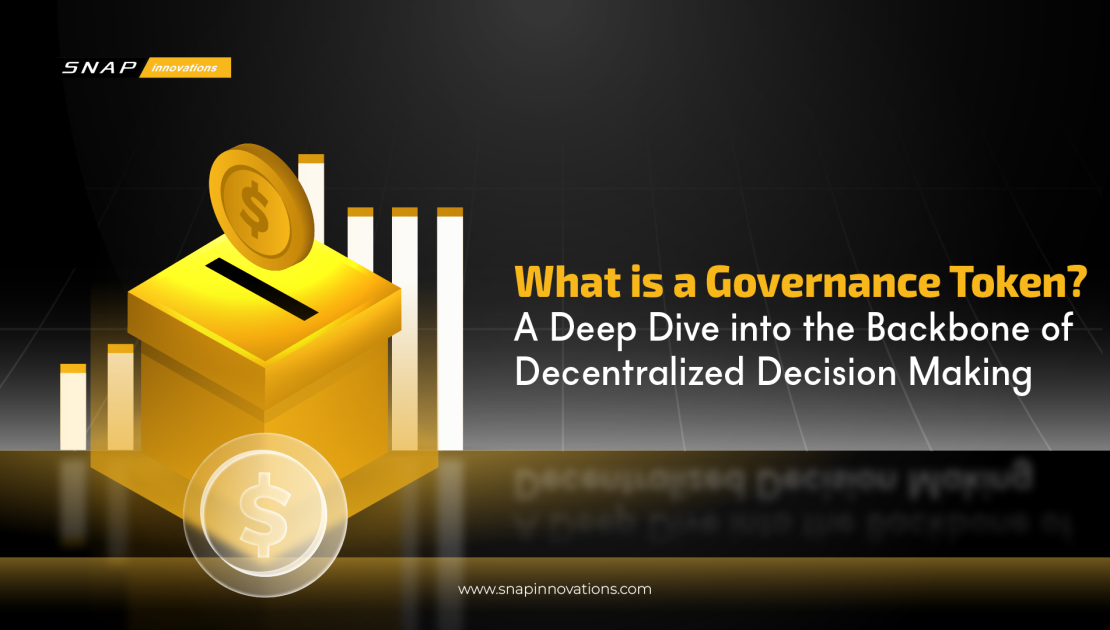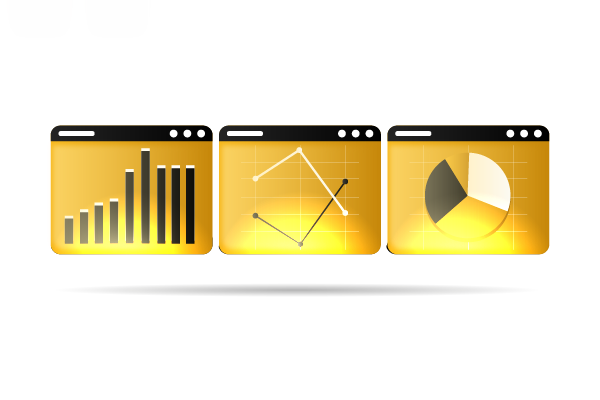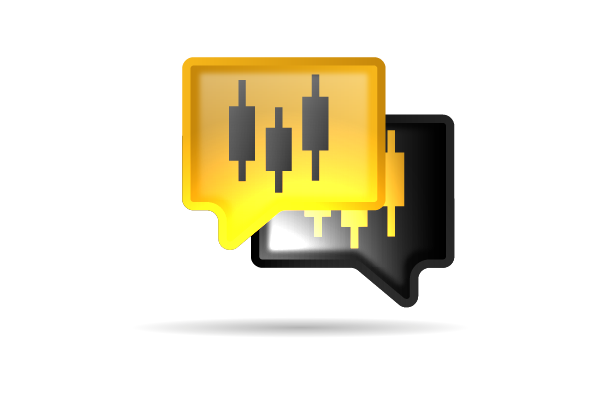What is a Governance Token? A Deep Dive into the Backbone of Decentralized Decision-Making

As blockchain technology continues to revolutionize the digital landscape, concepts such as decentralization, autonomy, and transparency have become foundational to new financial and digital infrastructures. One of the most pivotal innovations enabling these ideals is the governance token—a core component of many decentralized finance (DeFi) projects, decentralized autonomous organizations (DAOs), and Web3 ecosystems.
Governance tokens serve a crucial purpose: they empower holders with voting rights and decision-making powers within a protocol. Rather than entrusting project development and rule-making to a central authority, governance tokens distribute control among stakeholders, ensuring collective participation and alignment with community interests. But what exactly are governance tokens, and why are they reshaping how we build online communities and financial systems? Let’s explore.
What is a Governance Token?
A governance token is a type of cryptocurrency that grants its holder the ability to participate in the decision-making processes of a decentralized protocol or organization. Unlike traditional corporate governance, which relies on executives and board members, governance tokens democratize this power—allowing individuals who hold the token to vote on issues ranging from software upgrades and fund allocation to partnerships and strategic roadmaps.
Governance tokens are most commonly found within DeFi applications and DAOs, where decentralization is a key pillar. For example, in a DeFi lending platform, governance tokens might allow holders to vote on interest rate models, collateral options, or risk parameters. Token holders may also propose changes themselves, subject to community approval. This mechanism transforms passive users into active stakeholders who shape the project’s future. By aligning incentives and enabling decentralized control, governance tokens play a central role in the long-term sustainability and evolution of Web3 projects.
How Governance Tokens Work
Governance tokens are more than just digital assets—they are the engine behind on-chain democracy. Their primary function is to provide a mechanism for decentralized decision-making, allowing protocol users, developers, and investors to participate in shaping the direction of a project. This is often achieved through voting systems that allow token holders to weigh in on key issues such as proposed upgrades, treasury spending, ecosystem grant distribution, and overall changes to how a protocol operates.
In decentralized finance (DeFi) and DAO environments, where trustless systems are critical, governance tokens serve as a tool for aligning incentives and maintaining transparency. The process usually involves a proposal being submitted, reviewed by the community, and then voted on by token holders. The outcome of the vote determines whether the proposal will be implemented. This model replaces the need for traditional management structures and gives power directly to the community, making governance tokens an essential part of achieving decentralization in practice.
Beyond voting, governance tokens often carry incentives for participation. They may be distributed through methods like yield farming, airdrops to early adopters, or liquidity mining programs. Once in circulation, these tokens become tools for governance but also serve as financial assets, with their value fluctuating based on market demand and the perceived influence they provide. In some systems, voting is conducted entirely on-chain via smart contracts, ensuring immutability and transparency. Other systems use off-chain platforms like Snapshot, which allows voting without incurring transaction fees.
Benefits and Challenges of Governance Tokens
 Governance tokens offer transformative potential for decentralized projects, but they also bring along a mix of strengths and drawbacks that shape how effective governance can be. Below are five core benefits and challenges that define the governance token landscape:
Governance tokens offer transformative potential for decentralized projects, but they also bring along a mix of strengths and drawbacks that shape how effective governance can be. Below are five core benefits and challenges that define the governance token landscape:
1. Decentralization of Control
Instead of central authorities dictating rules and decisions, governance tokens allow communities to participate directly in shaping a protocol’s evolution. This encourages transparency and often leads to more innovative and user-centric solutions, as decisions are made by those who are actively using and building the platform.
2. Alignment of Incentives
Governance tokens create a structure in which users, developers, and investors are all stakeholders. Since the success of the protocol can directly influence the token’s market value, participants are naturally motivated to make decisions that contribute to long-term growth and sustainability. This financial stake promotes responsibility and collaboration among community members.
Also read: Top 7 Blockchain Explorers You Should Know in 2025
3. Whale Dominance:
One major issue is whale dominance, where a small number of holders with large amounts of tokens can exert disproportionate influence over voting outcomes. This undermines the principle of decentralization and can lead to decision-making that favors the interests of a few rather than the broader community. Protocols continue to explore ways to combat this, such as implementing quadratic voting or token locking mechanisms.
4. Low Participation Rates
In many projects, only a small percentage of token holders actually engage in voting, which can result in poorly vetted or unrepresentative decisions being made. This governance apathy may be due to technical barriers, lack of awareness, or the perceived complexity of the voting process. Addressing these issues often requires improved user education, streamlined interfaces, and voting incentives.
5.Complexity of Systems:
Governance frameworks can become overly intricate, making it difficult for average users to understand the implications of their votes. As protocols evolve, the governance layer must also be designed to remain accessible while ensuring informed participation. Without proper support and clarity, even well-meaning governance models can fail to reflect the will of the community they aim to serve.
Popular Governance Tokens and Their Models
 Let’s explore how major projects are utilizing governance tokens and the models they’ve developed to foster decentralization and participation.
Let’s explore how major projects are utilizing governance tokens and the models they’ve developed to foster decentralization and participation.
1. MakerDAO (MKR)
MakerDAO is one of the earliest and most influential decentralized finance protocols, responsible for the creation of DAI—a decentralized stablecoin. The MKR token governs the system, allowing holders to vote on decisions that impact the protocol’s risk management, collateral types, and overall system stability. MKR holders are the final line of defense against DAI losing its peg, as they are incentivized to act in the protocol’s best interests due to the token’s role in absorbing excess debt.
The governance process is on-chain and requires MKR to be locked in smart contracts to cast votes. While this ensures a high degree of transparency, it has also led to concerns about centralization, especially when large MKR holders can significantly influence proposals. However, MakerDAO continues to evolve its governance systems to encourage broader participation, including delegate voting and community governance facilitators.
2. Uniswap (UNI)
Uniswap, the largest decentralized exchange by trading volume, uses the UNI token to enable decentralized governance of the protocol. Holders of UNI can vote on decisions like fee structures, treasury grants, and future upgrades, ensuring that the protocol remains in the hands of its community rather than a centralized team. In 2020, Uniswap’s airdrop of 400 UNI tokens to early users marked a landmark event in governance token distribution.
Governance voting is done through Snapshot—a gasless, off-chain voting platform. However, a major challenge has been low voter turnout and the concentration of voting power in the hands of a few large delegates. Still, the Uniswap Foundation is actively working on improving community engagement by providing grants, educational resources, and governance incentives to make participation more appealing and accessible.
3. Aave (AAVE)
Aave is a decentralized lending platform that allows users to borrow and lend crypto assets in a non-custodial way. The AAVE token plays a critical role in its governance system, allowing holders to vote on upgrades, risk parameters, and safety module operations. Unlike other platforms, Aave also gives token holders influence over its liquidity mining incentives and the direction of its development roadmap.
Governance on Aave is fully on-chain and built around the Aave DAO, with active proposal forums and community discussions. This setup has made Aave one of the more participatory protocols, with a strong focus on transparency and inclusivity. However, the technical complexity of some proposals can make it difficult for average users to understand and engage, creating a learning curve for new participants.
4. Compound (COMP)
Compound is another major DeFi protocol focused on algorithmic, decentralized interest rate markets. Its governance token, COMP, allows holders to propose and vote on protocol changes such as market parameters, supported assets, and system upgrades. COMP introduced a governance model that many other DeFi platforms later adopted, making it a pioneer in on-chain governance mechanics.
The Compound governance system is built around proposal thresholds, timelocks, and quorums to ensure that only serious and well-supported ideas move forward. While these safeguards help prevent spam and malicious proposals, they can also limit grassroots participation due to high barriers for proposal submission. Still, Compound’s governance system has remained influential and continues to evolve through community-led development.
5. Curve Finance (CRV)
Curve Finance specializes in stablecoin swaps and has become one of the most liquidity-rich protocols in DeFi. The CRV token governs the protocol and is closely tied to the Curve DAO. Unlike simple one-token-one-vote systems, CRV introduces vote-escrowed CRV (veCRV), where users must lock up their tokens for a period to gain voting power. This incentivizes long-term commitment and discourages short-term, speculative voting.
This “lock-to-vote” model aligns voting power with users who are genuinely invested in the protocol’s success over time. It has led to Curve Wars, where protocols compete to gain control over veCRV to direct rewards. While this model has driven high engagement, it has also created complexities and competition that can alienate newcomers unfamiliar with DeFi game theory.
6. Arbitrum (ARB)
Arbitrum is a Layer 2 scaling solution for Ethereum, and its governance token ARB gives holders influence over the Arbitrum DAO and its ecosystem fund. Although Arbitrum was initially governed by Offchain Labs, the launch of ARB in 2023 marked a major transition to community governance. The token enables users to vote on how funds are allocated to projects building on Arbitrum and to shape future upgrades.
The DAO governs not just protocol upgrades but also key financial decisions via treasury management. While Arbitrum’s DAO is one of the largest by treasury size, it faces the challenge of engaging a diverse set of stakeholders, from developers and DAOs to individual retail holders. Early governance proposals have drawn both praise and criticism, showcasing the difficulty of balancing decentralization with strategic execution.
7. Optimism (OP)
Optimism is another Layer 2 scaling solution that uses the OP token for governance under a unique structure called the Optimism Collective. Governance is split into two “houses”: the Token House, made up of OP holders who vote on technical upgrades and ecosystem funding, and the Citizens’ House, focused on public goods funding and identity-based governance.
This dual-house model is pioneering a new form of governance that goes beyond token-weighted votes. By including non-financial actors and emphasizing public goods funding, Optimism aims to build a more inclusive and impact-focused governance framework. However, the complexity of the structure and relatively new implementation means the system is still being tested and refined in real-time.
Table Comparison of Governance Models
 While all governance tokens aim to decentralize control, their systems differ in structure and execution. Here’s a comparative look at some of the top governance token models.
While all governance tokens aim to decentralize control, their systems differ in structure and execution. Here’s a comparative look at some of the top governance token models.
| Feature | MakerDAO (MKR) | Uniswap (UNI) | Aave (AAVE) | Compound (COMP) | Curve (CRV) | Arbitrum (ARB) | Optimism (OP) |
| Voting Mechanism | On-chain | Off-chain | On-chain | On-chain | On-chain | Off-chain | Hybrid |
| Proposal Threshold | MKR stake | 1% UNI | AAVE stake | COMP + quorum | veCRV locked | ARB stake | OP delegate |
| Quorum Required | Yes | Yes | Yes | Yes | Yes | Yes | Yes |
| Delegation Support | Yes | Yes | Yes | Yes | No | Yes | Yes |
| Token Distribution | Sale/Incentive | Airdrop/Farming | Sale | Incentive Mining | Farming | Airdrop | Airdrop |
Each of these governance models reflects a project’s unique philosophy and user base. Some focus on locking mechanisms to encourage long-term alignment (e.g., Curve), while others use more open and accessible methods like airdrops (e.g., Uniswap). Understanding these models helps users choose which projects to support based on how much influence and accessibility they offer to token holders.
Also read: What is Polymarket? A Beginner’s Guide to Crypto Betting and Forecasting
Conclusion
Governance tokens are at the heart of the decentralized revolution. They empower communities to steer the direction of protocols, embodying the ethos of Web3: open, transparent, and community-driven. By transforming users into stakeholders, they create new models of cooperation and accountability that challenge traditional hierarchical systems.
However, as we’ve seen, the road to truly effective governance is filled with challenges—from low participation and whale domination to technical and educational barriers. The next phase in governance token evolution will need to address these issues through smarter systems, better incentives, and more inclusive frameworks. Whether you’re a crypto veteran or a curious newcomer, understanding governance tokens is essential to navigating the future of decentralized technologies.
I'm Kris, a fintech writer with three years of experience. I've been on a mission to simplify the intricacies of trading through my words, bridging the gap between technology and finance. Join me on this journey as I empower traders and investors with clear, engaging content in the dynamic world of fintech.
